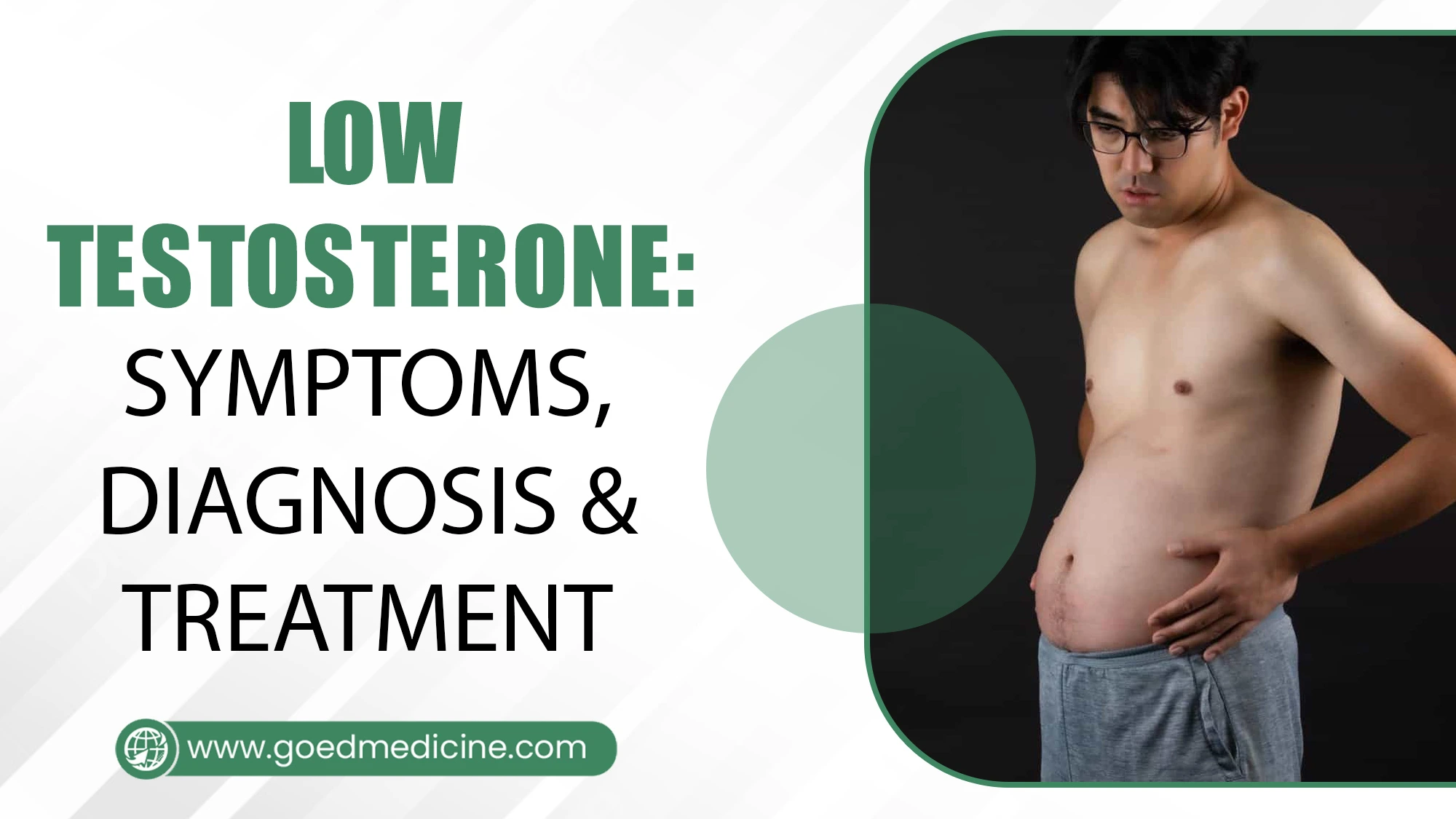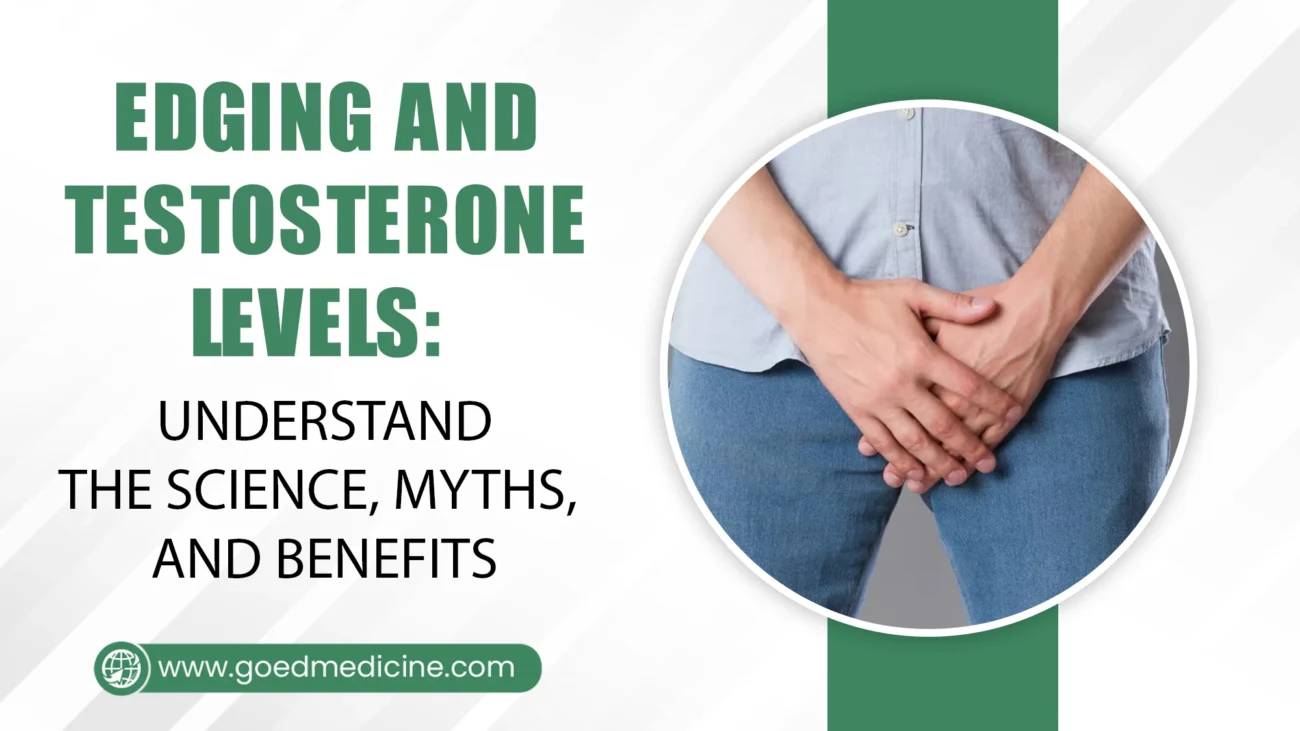Low Testosterone: Symptoms, Diagnosis & Treatment

Testosterone is the hormone that gives men masculinity. Produced by the testicles, it is responsible for male characteristics such as a deep voice, supporting sperm production, and facial hair. Testosterone increases the amount of red blood cells, boosts libido, keeps bones strong, and supports thinking abilities.
A deficiency of testosterone, often referred to as low testosterone, can cause unwanted symptoms. Testosterone levels peak in early adulthood and decrease with age by about 1-2% per year, starting in the 40s.
When men reach their 50s and beyond, it can lead to symptoms, such as impotence or changes in sexual desire, depression or anxiety, decreased muscle mass, less energy, weight gain, anaemia, and hot flashes.
Table of Contents
What Does Testosterone Do?
Testosterone is the main androgen. It stimulates the production of male characteristics and is essential for the development of sperm. Testosterone levels are much higher in men than in women. In men, testosterone helps maintain and develop:
- Develop Sex organs and genitals
- Promotes the density of the bones
- Give a feeling of well-being
- Improve muscle mass
- Raise adequate levels of red blood cells
- Improve sexual and reproductive function
Usually, your body strictly controls the levels of testosterone in your blood. Levels are usually highest in the morning and decrease during the day. The hypothalamus and pituitary gland usually control the amount of testosterone your testes produce and release.
Symptoms of Low Testosterone
- Reduced Muscle Mass: When testosterone decreases, you may suffer a significant loss of muscle mass.
- Reduced Bone Mass: Testosterone helps stimulate the creation of bone and keeps it at a certain level. Low testosterone levels can cause this volume to decrease, which can make bones more susceptible to fractures.
- Reducing Energy Levels: Low testosterone can lead to reduced energy levels and fatigue. A person may feel tired even after sufficient rest or show a reduced interest in exercise or movement.
- Erection Problems: Low testosterone levels make it difficult to achieve or maintain an erection. However, low testosterone is not always a direct cause of erectile dysfunction.
- Reducing the Amount of Sperm: Sperm is the fluid that makes up the majority of the male ejaculate. Low testosterone levels can reduce sperm levels and testosterone. This can also lead to fertility problems.
- Reduced Sexual Desire: People with low testosterone often experience reduced sexual desire. The decrease in sexual desire occurs with age, but when the cause is low testosterone, the man will notice a decrease in the desire for sex.
- Hair Loss: Most people experience hair loss as a part of ageing, and age-related hair loss can affect anyone.
How is Low Testosterone Diagnosed?
Diagnosing low testosterone begins with understanding the symptoms. Doctors can examine your medical history and look for signs such as reduced hair or testicular size to identify potential causes. They can also do a blood test in the morning when testosterone levels are highest.
If necessary, further research, such as imaging scanning or semen analysis, can be done to find out the underlying cause. The doctor usually allows the following tests and instructions:
- Medical History Overview: Discusses symptoms and all underlying health conditions.
- Perform a Physical Exam: Check for signs such as reduced hair, breast enlargement, or testicular contraction.
- Assign Blood Tests: Measure levels of testosterone measured bright and early, as morning is the most accurate time. There is usually a concern if someone’s total testosterone level is under 300 ng/dL.
Treatment Options for Low Testosterone
Once diagnosed, several treatment avenues are available:
- Testosterone Replacement Therapy (TRT): This is the most common treatment for low testosterone levels in men. The most important thing is that with TRT, it replaces the hormone testosterone, which your body fails to produce.
- Gels: Gels are used on the skin daily on both upper arms, shoulders, or hips. It is important to wash your hands after application and cover the treated area with clothes so as not to expose others to the effects of testosterone.
- Lifestyle Changes: Regular exercise, balanced eating, stress management, and adequate sleep can naturally increase testosterone levels.
- Oral Medications: These medications are swallowed or the tablets are attached to the gums or inner cheek twice a day. Testosterone is then absorbed into the bloodstream.
- Pellets: They are used under the skin, usually around the hips or buttocks, and slowly work and release testosterone. They are changed after every 3 to 6 months.
- Injections: Various preparations are injected every 7 to 14 days. Testosterone levels can increase to high levels for a few days after the injection and then slowly decrease.
Edging and Its Impact on Testosterone Levels
Edging, the act of slowing orgasm to enhance pleasure, is associated with edging and testosterone levels, and some say it affects hormone production. Still, researchers do not have much evidence that suggests big changes in testosterone levels. Sex may be more fun, but this doesn’t necessarily raise hormone levels.
Experts are studying to establish is edging good for testosterone and think does edging increases testosterone. Many people think that it helps, but researchers have not yet reached a conclusion. Despite studies showing temporary hormonal changes during sexual activity, there is no evidence that Edging leads to sustained increases in testosterone levels.
People considering this technique should work with awareness and consult a specialist to obtain reliable information. Longer-term effects on hormone production require further study.
Dealing with Erectile Dysfunction
Erectile dysfunction is a distressing symptom, but there are various treatments to deal with erectile dysfunction. This includes drugs such as Malegra and Cenforce 50, lifestyle changes, treatments, and addressing underlying health problems.
To determine the effective treatment for managing ED, it is very important to consult a healthcare provider, especially if it may be associated with a decrease in testosterone levels.
Drugs for Erectile Dysfunction
Sildenafil citrate, an active ingredient in Malegra tablet and Cenforce 50, is widely used to treat erectile dysfunction (ED) by improving flow of blood to the penis. Malegra increases the erectile response during sexual stimulation but does not directly decrease testosterone levels. To ensure safety, it is good to consult a healthcare professional before using an ED treatment.
- Maregra Tablets: Malegra contains sildenafil citrate, which helps with erection.
- Cenforce 50: Cenforce 50 has a similar effect, but does not affect testosterone.
- Sildenafil citrate: Sildenafil citrate, which contains sildenafil, works by blocking enzymes that regulate blood flow through the penis.
Conclusion
Low testosterone is a natural part of ageing, but it can lead to alarming symptoms such as low sex drive, decreased libido, and loss of muscle mass. If you see the first signs, consult your doctor early to avoid bigger problems. Since testosterone is key to many aspects of men’s health, checking their levels should be done, especially after the 40 age.
There are several possible treatments, from testosterone therapy to lifestyle changes and medications for related problems such as erectile dysfunction. Early diagnosis can improve quality of life.
Reference




